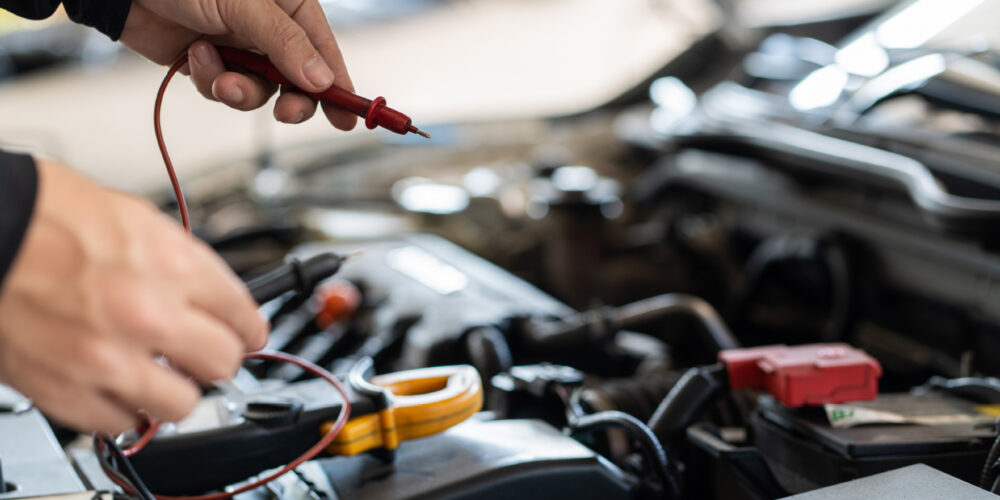
Most shops in colder climates start to see an influx of customers with battery service needs as the holidays approach. Perhaps more than any other maintenance category, being proactive about taking care of your customers with dying or dead batteries is essential this time of year.
Lead-acid batteries have an average service life of roughly three to five years depending on the climate. While Absorbent Glass Mat (AGM) gel cell batteries typically last a few years longer, both are prone to failure as the temperature dips. The only way to spot a weak battery is by testing it. If your test shows it’s time to replace the battery, be sure to follow recognized replacement best practices.
Green May Not Mean Go In The Winter
Hybrid vehicles can have special challenges in winter months. According to research released by the American Automobile Association, on average, an ambient temperature of 20 degrees F resulted in a 12 percent decrease of combined driving range and an 8 percent decrease of combined equivalent fuel economy, compared to testing at 75 degrees F.
Somewhat surprisingly, heat had less of an impact. AAA found that an ambient temperature of 95 degrees F resulted in a 4 percent decrease in driving range and 5 percent decrease in fuel economy than compared to 75 degrees F.
The owner’s manuals of hybrid or electric vehicles must be consulted to determine specific charging procedures for winter months. According to official documentation for the Nissan Leaf, the vehicle’s lithium ion battery is particularly susceptible to temperature swings. “To prevent damage to the Li-ion battery: Do not expose the vehicle to extreme ambient temperatures for extended periods. Do not store the vehicle in temperatures below -13 degrees F for more than seven days. Note: if the the outside temperature is -13 degrees F or less, the Li-ion battery may freeze and it cannot be charged or provide power to run the vehicle. Move the vehicle to a warm location.”
In addition, the Leaf’s owner’s manual warns that the vehicle’s driving range may be substantially reduced in extremely cold conditions.
Similarly, the owner’s manual for the Volkswagen e-Golf warns that the car’s battery must be protected in cold weather. “NOTICE – Always make sure that the high-voltage battery is not exposed to extremely low and high temperatures as well as to water especially for a longer time. Failure to protect and care for the high voltage battery can lead to serious damage and/or a decrease of the capacity void coverage under the New Vehicle Limited Warranty.”
Winter Battery Service Tips
Be Careful Handling the Battery: Lead-acid batteries containing liquid electrolytes can spill if not handled properly. The acid in this liquid can be caustic to the skin and burn through clothing. If handling such a battery, consider using a carrying strap that attaches to the battery posts or the strap on the battery case (if it has one). At the very least, lift the battery carefully from underneath and be sure not to squeeze the sides of the case since acid can seep out the top when under pressure.
Steer Clear Of Frozen Batteries: Batteries can freeze when the vehicle has been sitting in extreme cold. Never try to jump-start or recharge a battery that is frozen since it is more prone to exploding. You can try to remove the battery from the vehicle and let it thaw before charging or testing, but most batteries that have been frozen will require replacement.
Protect Yourself From Shock Hazards: Most batteries only produce 12 volts, so there is no danger of being shocked by the battery, charger or jumper cables. The one exception is high-voltage hybrid batteries, which pack as much as 300 volts and are capable of delivering a lethal shock. On hybrid vehicles, don’t touch any of the hybrid electrical components without first isolating (disconnecting) the hybrid battery. Most have a safety switch that disconnects the battery from the rest of the electrical system. Refer to the owner’s manual or the OEM service procedures for how to do this as procedure.
Important: Wear gloves rated to withstand 1,000 volts and don’t touch any orange color-coded cables until the high voltage battery has been disconnected when servicing these vehicles.
Article courtesy ImportCar.













